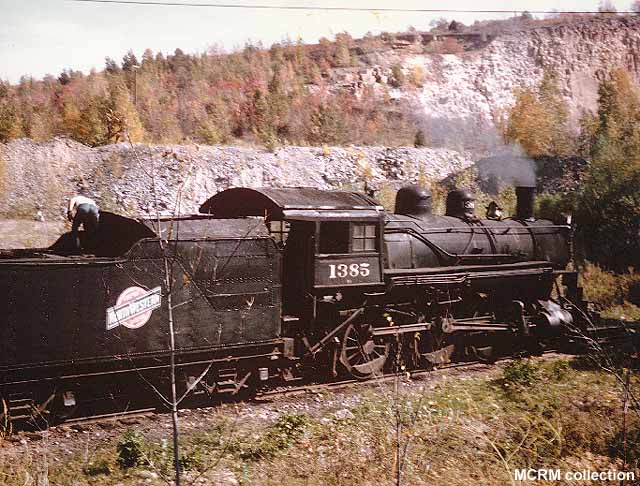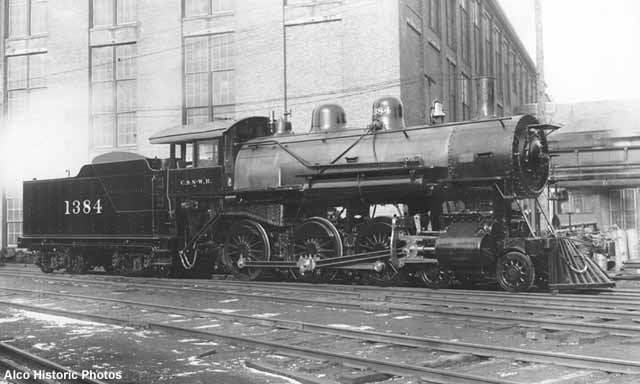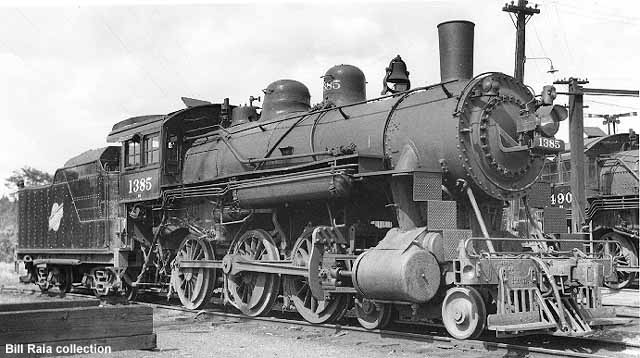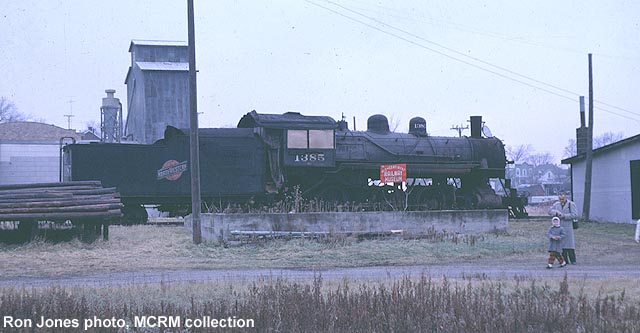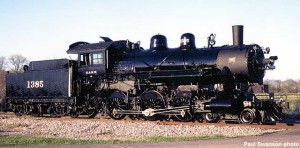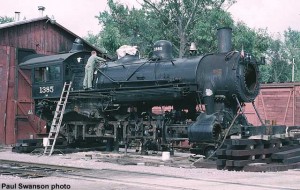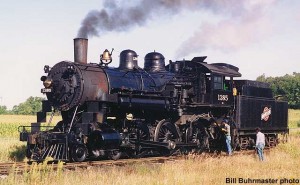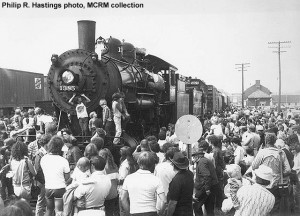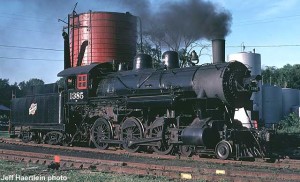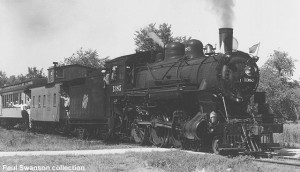4-6-0, American Locomotive Co., construction #42187, March 1907
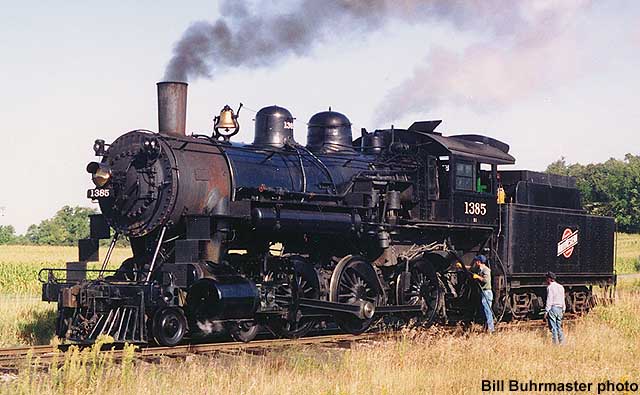
Mid-Continent’s most famous locomotive was built in March 1907 by the American Locomotive Company’s Schenectady Works. Between 1901 and 1908, 325 of these 82-ton class R-1’s were built for the C&NW, making them the largest single class of locomotives that railroad ever owned. Designed for fast freight service, they also were used for secondary passenger trains and local switching from Upper Michigan to the Dakotas to suburban Chicago.
The class R-1 locomotives, such as #1385, had a pivotal role in the development of C&NW steam motive power. When the R-1’s were purchased, the railroad had to rebuild tracks, bridges, turntables, and engine houses to accommodate them.
Over the years, #1385 underwent many modifications and is preserved as it was retired in 1956. In 1961, Mid-Continent members scraped together $2600 to purchase the locomotive from C&NW. #1385 powered the museum’s trains during their first season at North Freedom in 1963.
Since 1982, #1385 has visited many midwestern communities on good-will tours. In the summer of 1992, she operated on Wisconsin Central Ltd. and Wisconsin & Southern, pulling passenger excursions in Wausau and Milwaukee (Granville) and freight trains in Horicon.
#1385 has been listed on the Wisconsin Register of Historic Places, and the National Register of Historic Places. #1385 is the only operable C&NW steam locomotive today, and one of only eight C&NW locomotives that have been preserved.
On July 1, 1998, #1385 came out of service in need of major repairs. After several years on the sidelines, repair work began in earnest in 2011 following the announcement of a $250,000 challenge grant from the Wagner Foundation of Lyons, WI. Progress updates are posted to the C&NW 1385 Steam Status webpage.
Like many of the midwest granger roads, the Chicago & North Western Railway was formed with the consolidation of smaller lines and quickly expanded. C&NW was organized in 1859 by joint acts of the Illinois and Wisconsin state legislatures to comprise a main trunk route running northwest from Chicago to Janesville, Wisconsin and on to Green Bay. In 1864, the pioneering Galena & Chicago Union was merged, and the C&NW was on its way to becoming a major link in the east-west transcontinental between Chicago and Council Bluffs, Iowa where it connected with the Union Pacific.
By the turn of the century, C&NW reached seven states with over 5,000 miles of track. After the depression, prudent management kept the company successful by pruning unprofitable lines and long-distance passenger trains. C&NW soon merged several competitors to strengthen its traffic base, including M&StL in 1959, Chicago Great Western in 1968, and the Rock Island’s Minneapolis-Kansas City route in 1980. In 1995, C&NW succumbed itself when it folded into the Union Pacific.
Mid-Continent’s ties with C&NW heritage are extensive: ex-C&NW steam locomotive #1385 traveled the North Western’s system extensively in the 1980’s, serving as its “goodwill ambassador,” and Mid-Continent’s rail line was purchased from the C&NW in 1963, allowing the museum to move to its present site.
